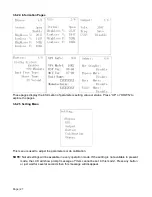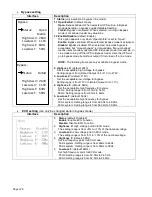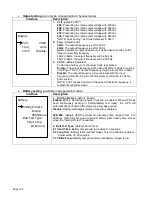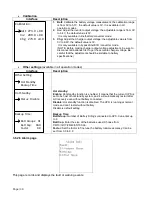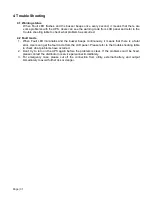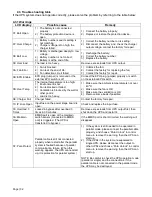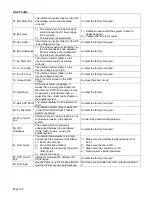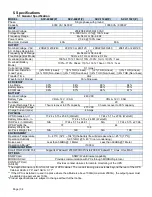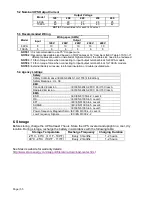
Page | 21
5. A few seconds later, the UPS will enter into Battery mode; “Battery mode” will be displayed on
LCD.
3.5.3 Connect devices to UPS
After the UPS is turned on, you can connect devices (load) to the UPS.
1. Turn on the UPS first and then switch on the devices one by one; the LCD panel will display total
load level.
2. If inductive loads needed to be connected, such as a printer, the in-rush current should be
calculated carefully to see if capacity of the UPS can handle the in-rush.
3. If the UPS is overloaded, the buzzer will beep twice every second.
4. When the UPS is overloaded, remove some loads immediately.
i. If the overload timer expires while in Line Mode, the UPS will automatically transfer to Bypass
mode. After the overload is removed, it will return to Line mode.
ii. If the overload timer expires while in Battery Mode, the UPS will enter fault status.
1. At this time, if bypass is enabled, the UPS will power the load via bypass.
2. If bypass function is disabled or the input power is not within bypass acceptable range, it
will cut off output immediately.
3.5.4 Charge the batteries
1. After the UPS is connected to the utility power, the charger will charge the batteries
automatically except in Battery mode or during battery test.
2. It is suggested to charge batteries at least 10 hours before use. Otherwise, the backup time may
be shorter than expected.
3. Make sure the battery numbers setting on the control board (refer to the section of changing
battery quantity) is consistent with actual connection.
3.5.5 Battery Mode operation
1. When the UPS is in Battery mode, the buzzer will beep according to different battery capacity.
i. Buzzer will beep once every 4 seconds in battery mode,
ii. When the battery voltage drops to the alarm level, the buzzer will beep once per second and
the UPS will shut down automatically soon.
1. Users could switch off some non-critical loads to disable the shutdown alarm and prolong
the backup time.
2. If there is no more load to be taken off at that time, shut down all loads as soon as
possible to protect the devices or save data. Otherwise, there is a risk of data loss or
load failure.
2. In Battery mode, you could enter “Control->Mute” on LCD to silence the buzzer. See
3. The backup time depends on the external battery capacity.
4. The backup time may change under different environment temperature and load type.
5. The maximum backup time is limited by default 16.5 hours (After discharging 16.5 hours, UPS
will shut down automatically to protect the battery). The time could be modified through LCD
panel or communication port.
3.5.6 Test the batteries
1. If you need to check the battery status or performance when the UPS is running in Line /
Converter / ECO mode, you could enter “Control->Batt Test” to instruct the UPS to do battery
test. See
2. Battery test can be set through monitoring software.
3. If the UPS is in battery testing, “Battery test mode” will be displayed on LCD, the buzzer indication
will be the same as Battery mode, but both line LED and battery LED will be lit.





















